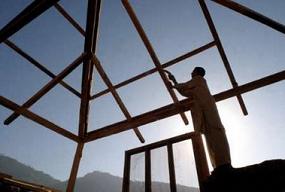Recovery Phase
When is a disaster truly over? Is it "over" once the last rescue is complete and the responders go home, in a matter of days or a few weeks after the initial event? Is it over once debris has been removed and roadways reopened?
Recovery is defined within emergency management as the process of restoring and rebuilding the community to a pre-disaster state. In the case of large disasters, such as the 1989 Loma Prieta earthquake in Northern California, or the 1994 Northridge Earthquake in Southern California, Recovery is measured in years or decades. Hurricane Katrina, the April 2010 Baja California earthquake (impacting Imperial County), and the 2010 Gulf Oil Spill are more recent examples of prolonged recovery efforts still underway, which are bound to continue for years to come. Locally, recovery efforts have been undertaken for the 2006 floods and the 2007 freeze which have impacted our community.
 Recovery is accomplished through a variety of processes and programs. The most widely recognized programs which may be made available to the general public are Individual Assistance (IA) and Small Business Administration (SBA) Disaster Assistance Loans. Government agencies may also be eligible for funds from the California Disaster Assistance Act (CDAA) and Public Assistance (PA) from FEMA, depending on the scope and severity of the disaster. These funding sources assist impacted government agencies with extenuating response costs, as well as repairs to government-owned facilities and infrastructure (roadways, et cetera). These programs can relieve a significant portion of the financial burden caused by disaster recovery from the local governments' budgets, leaving as little as 6.25% of costs to the responsibility of local government.
Recovery is accomplished through a variety of processes and programs. The most widely recognized programs which may be made available to the general public are Individual Assistance (IA) and Small Business Administration (SBA) Disaster Assistance Loans. Government agencies may also be eligible for funds from the California Disaster Assistance Act (CDAA) and Public Assistance (PA) from FEMA, depending on the scope and severity of the disaster. These funding sources assist impacted government agencies with extenuating response costs, as well as repairs to government-owned facilities and infrastructure (roadways, et cetera). These programs can relieve a significant portion of the financial burden caused by disaster recovery from the local governments' budgets, leaving as little as 6.25% of costs to the responsibility of local government.
For information about current recovery efforts, please see the County's Emergencies site.